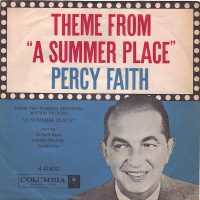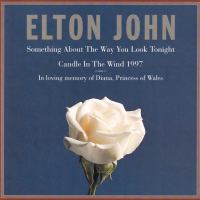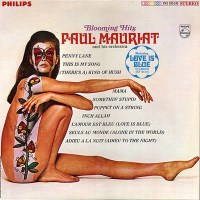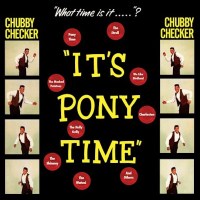
In the nearly two years that we’ve been calculating the Lost Factor of various hits of the ‘60s, ‘70s, ‘80s, and ‘90s, only two songs have had perfect scores of 100. One came from the very first year we measured. One came near the end. And that’s how Percy Faith’s “Theme from ‘A Summer Place’” and Elton John’s “Candle in the Wind” are the top two songs in our Top 100 of “The Lost Factor: 1960-99.”
The Lost Factor began nearly two years ago as our look at the relative endurance of different hit songs over time. Recently, we finished 1995-99, allowing us to look at 40 years’ worth of hit music.
If you’ve already read our recap of the ‘60s, you won’t be surprised that they comprise 69% of the top 100, with 56% of the top 100 coming from the pre-Beatles years (1960-63) alone. The early ‘60s were a significant presence on Oldies radio through the early ‘00s. Now, even the late ‘60s are represented on major-market FM radio by only a handful of titles. So there’s no surprise here.
The concept of “Lost 45s” began with radio host Barry Scott’s radio show that then specialized in ‘70s pop not heard on the radio. But there are only 11 songs from the ‘70s and six from the ‘80s here. Most of the ‘70s songs are from the first few years of the decade. Only one ‘80s song comes from between 1983-88. There are 14 songs from the ‘90s, not surprising if you’ve seen our recent coverage.
 We’ve seen recurring themes in what sort of songs have a high Lost Factor. Categorizing the Top 100 by genre brings up some familiar genres, but also some that were relatively ‘60s-specific:
We’ve seen recurring themes in what sort of songs have a high Lost Factor. Categorizing the Top 100 by genre brings up some familiar genres, but also some that were relatively ‘60s-specific:
- 22 songs by teen idols — a major category in any of our calculations, but especially in the pre-Beatles years;
- 18 instrumentals — also dominant as the ‘60s began. The No. 100 song on the list, Horst Jankowski’s “A Walk in the Black Forest,” is a song I remember not from radio, but because it was a staple of children’s television.
- 17 MOR artists — it’s interesting to note that some made their appearance with an early-‘60s title but others, like Wayne Newton and Paul Anka, were early ‘60s artists who are here by dint of a ‘70s comeback. (Songs that were either comebacks or retro-flavored throwbacks have also been a common theme.)
- Nine novelty songs, although I made the decision not to include a 10th (see below).
- Seven folk songs — two by the Highwaymen, including “Michael (Row the Boat Ashore).”
The tie for most-represented artist is between early ‘60s hitmaker Connie Francis and Donny Osmond with three. Osmond’s hits are spread between his solo entries, the Osmonds, and Donny & Marie. Acts with two apiece are Chubby Checker, the Highwaymen, Jack Scott, Johnny Tillotson, and Steve Lawrence.
Because there were so many early ‘60s and relatively few ‘70s and ‘80s songs, female pop of that era isn’t quite as present as in our other recaps. Olivia Newton-John, Diana Ross, and Sheena Easton are here. Barbra Streisand, however, escapes. So does Helen Reddy. There are some G.O.A.T. artists represented here — Elton John, Chuck Berry, Jackie Wilson — but that list would also have been a lot longer if we had done a top 200.
 Taste is never consistent. Both “Do Anything” by Natural Selection and the similar rhythmic pop hit “P.A.S.S.I.O.N.” by Rythm Syndicate made the top 200. I genuinely love the former and am indifferent to the latter. When I totaled it up, there were 14 songs I really liked here. They include Mel & Tim’s “Starting All Over Again,” tied for No. 1 among the songs that you genuinely liked in a readers’ poll.
Taste is never consistent. Both “Do Anything” by Natural Selection and the similar rhythmic pop hit “P.A.S.S.I.O.N.” by Rythm Syndicate made the top 200. I genuinely love the former and am indifferent to the latter. When I totaled it up, there were 14 songs I really liked here. They include Mel & Tim’s “Starting All Over Again,” tied for No. 1 among the songs that you genuinely liked in a readers’ poll.
Small print abounds. I made an executive decision not to include “Monster Mash” by Bobby “Boris” Pickett. As readers have fairly pointed out, that song’s Lost Factor can’t be accurately determined by a single week’s airplay, even if that week is Halloween, when otherwise dead songs walk the earth. If I had included it, the graveyard smash would have been No. 67, based on chart points from the 1973 reissue.
In addition to the “Monster Mash” exception, small print abounds. Lost Factor was computed by dividing the year-end chart points for each of the Billboard Top 100 songs of the year by the number of spins measured in a seven-day period by BDSradio. Those spins were measured for different weeks over a 20-month period, not over a consistent time frame. I nevertheless found that few songs changed significantly when I went back and redid the math in different weeks.
(You can see more about methodology here, and all of my Lost Factor articles in one place as well.)
 By choosing 1960-99, I’m not including the first two years of the Billboard Hot 100. If you’re curious, the No. 1 song of 1958, Domenico Modugno’s “Volare,” would have had a Lost Factor of 100 and been tied for No. 1. But 1959’s top song, “Battle of New Orleans” by Johnny Horton would have had a LF of only 10. I also reserve the right to calculate 2000-04 eventually. With some of those songs resurfacing on the radio now, that era is particularly a 3D chessboard.
By choosing 1960-99, I’m not including the first two years of the Billboard Hot 100. If you’re curious, the No. 1 song of 1958, Domenico Modugno’s “Volare,” would have had a Lost Factor of 100 and been tied for No. 1. But 1959’s top song, “Battle of New Orleans” by Johnny Horton would have had a LF of only 10. I also reserve the right to calculate 2000-04 eventually. With some of those songs resurfacing on the radio now, that era is particularly a 3D chessboard.
Here are the Top 100 songs with the highest “Lost Factor” between 1960 and 1999:
| RANK | ARTIST | TITLE | YEAR | LOST FACTOR | SPINS |
|---|---|---|---|---|---|
| 1 | Percy Faith | Theme From “A Summer Place” | 1960 | 100 | 0 |
| 2 | Elton John | Candle in the Wind 1997 | 1997 | 100 | 1 |
| 3 | Paul Mauriat | Love Is Blue | 1968 | 99 | 0 |
| 4 | Highwaymen | Michael | 1961 | 98 | 0 |
| 5 | Chubby Checker | Pony Time | 1961 | 94 | 0 |
| 6 | Hugo Montenegro | The Good, the Bad and the Ugly | 1968 | 93 | 0 |
| 7 | Sensations | Let Me In | 1962 | 93 | 0 |
| 8 | String-A-Longs | Wheels | 1961 | 93 | 1 |
| 9 | S/Sgt. Barry Sadler | Ballad of the Green Berets | 1966 | 91 | 0 |
| 10 | Wayne Newton | Daddy Don’t You Walk So Fast | 1972 | 91 | 0 |
| 11 | Connie Francis | Everybody’s Somebody’s Fool | 1960 | 90 | 0 |
| 12 | Brothers Four | Greenfields | 1960 | 88 | 0 |
| 13 | Jack Scott | What in the World’s Come Over You | 1960 | 87 | 0 |
| 14 | Al Martino | I Love You Because | 1963 | 86 | 0 |
| 15 | Chuck Berry | My Ding-a-Ling | 1972 | 86 | 1 |
| 16 | Mar-Keys | Last Night | 1961 | 86 | 1 |
| 17 | Rebels | Wild Weekend | 1963 | 85 | 0 |
| 18 | R. Kelly & Celine Dion | I’m Your Angel | 1999 | 85 | 0 |
| 19 | Bobby Darin | You’re the Reason I’m Living | 1963 | 84 | 0 |
| 20 | Chubby Checker & Dee Dee Sharp | Slow Twistin’ | 1962 | 84 | 0 |
| 21 | Connie Francis | My Heart Has a Mind of Its Own | 1960 | 84 | 0 |
| 22 | Ferrante & Teicher | Exodus | 1961 | 84 | 0 |
| 23 | Billy J. Kramer & Dakotas | Little Children | 1964 | 83 | 0 |
| 24 | Johnny Tillotson | It Keeps Right On a-Hurtin’ | 1962 | 83 | 0 |
| 25 | Inez & Charlie Foxx | Mockingbird | 1963 | 82 | 0 |
| 26 | Ray Charles Singers | Love Me With All Your Heart | 1964 | 82 | 0 |
| 27 | Az Yet f/Peter Cetera | Hard to Say I’m Sorry | 1997 | 82 | 0 |
| 28 | Sue Thompson | Sad Movies (Make Me Cry) | 1961 | 81 | 0 |
| 29 | Chantays | Pipeline | 1963 | 80 | 0 |
| 30 | Connie Stevens | Sixteen Reasons | 1960 | 79 | 0 |
| 31 | Melanie | Lay Down (Candles in the Rain) | 1970 | 78 | 1 |
| 32 | Frankie Avalon | Why | 1960 | 77 | 0 |
| 33 | Glenn Medeiros & Bobby Brown | She Ain’t Worth It | 1990 | 77 | 1 |
| 34 | Brook Benton | The Boll Weevil Song | 1961 | 76 | 0 |
| 35 | Sweet Sensation | If Wishes Came True | 1990 | 76 | 1 |
| 36 | Murray Head & Trinidad Singers | Superstar | 1971 | 75 | 0 |
| 37 | Sounds Orchestral | Cast Your Fate to the Wind | 1965 | 75 | 0 |
| 38 | Dick & Dee Dee | The Mountain’s High | 1961 | 74 | 0 |
| 39 | Paul Anka | (You’re) Having My Baby | 1974 | 73 | 1 |
| 40 | Floyd Cramer | On the Rebound | 1961 | 72 | 0 |
| 41 | Jay & Americans | She Cried | 1962 | 71 | 0 |
| 42 | Steve Lawrence | Portrait of My Love | 1961 | 71 | 0 |
| 43 | Trini Lopez | If I Had a Hammer | 1963 | 71 | 0 |
| 44 | Connie Francis | Don’t Break the Heart That Loves You | 1962 | 70 | 0 |
| 45 | Jimmy Jones | Good Timin’ | 1960 | 70 | 0 |
| 46 | Divine | Lately | 1999 | 70 | 1 |
| 47 | Bert Kaempfert | Red Roses for a Blue Lady | 1965 | 69 | 0 |
| 48 | Donny Osmond | Sweet and Innocent | 1971 | 69 | 0 |
| 49 | Gary U.S. Bonds | Dear Lady Twist | 1962 | 69 | 0 |
| 50 | Natural Selection | Do Anything | 1991 | 69 | 0 |
| 51 | Serendipity Singers | Don’t Let the Rain Come Down (Crooked Little Man) | 1964 | 69 | 0 |
| 52 | Jimmy Clanton | Go, Jimmy, Go | 1960 | 68 | 0 |
| 53 | Shanice | Saving Forever for You | 1993 | 68 | 0 |
| 54 | Sue Thompson | Norman | 1962 | 68 | 0 |
| 55 | Betty Everett & Jerry Butler | Let It Be Me | 1964 | 67 | 0 |
| 56 | Jackie Wilson | Night | 1960 | 67 | 0 |
| 57 | Jack Scott | Burning Bridges | 1960 | 66 | 1 |
| 58 | Jørgen Ingmann | Apache | 1961 | 66 | 1 |
| 59 | Martin Page | In the House of Stone and Light | 1995 | 66 | 1 |
| 60 | Linda Scott | Don’t Bet Money Honey | 1961 | 65 | 0 |
| 61 | Highwaymen | Cotton Fields | 1962 | 65 | 0 |
| 62 | Osmonds | Down by the Lazy River | 1972 | 65 | 1 |
| 63 | Bent Fabric | Alley Cat | 1962 | 64 | 1 |
| 64 | Duane Eddy | Because They’re Young | 1960 | 64 | 0 |
| 65 | Henry Mancini | Days of Wine and Roses | 1963 | 64 | 0 |
| 66 | Johnny Tillotson | Without You | 1961 | 64 | 0 |
| 67 | Conway Twitty | Lonely Blue Boy | 1960 | 63 | 0 |
| 68 | Kenny Rogers & First Edition | Something’s Burning | 1970 | 63 | 1 |
| 69 | Mel & Tim | Starting All Over Again | 1972 | 63 | 0 |
| 70 | Richard Chamberlain | Theme from Dr. Kildare (Three Stars Will Shine Tonight) | 1962 | 62 | 0 |
| 71 | Steve Lawrence | Pretty Blue Eyes | 1960 | 62 | 0 |
| 72 | Tommy Page | I’ll Be Your Everything | 1990 | 62 | 0 |
| 73 | Ace Cannon | Tuff | 1962 | 61 | 0 |
| 74 | Don McLean | Crying | 1981 | 61 | 0 |
| 75 | Patti Page | Hush, Hush, Sweet Charlotte | 1965 | 61 | 1 |
| 76 | Rythm Syndicate | P.A.S.S.I.O.N. | 1991 | 61 | 1 |
| 77 | Anita Bryant | Paper Roses | 1960 | 60 | 0 |
| 78 | Bill Anderson | Still | 1963 | 60 | 0 |
| 79 | Clyde McPhatter | Lover Please | 1962 | 60 | 0 |
| 80 | Sheena Easton | The Lover in Me | 1989 | 60 | 1 |
| 81 | Buckner & Garcia | Pac-Man Fever | 1982 | 59 | 0 |
| 82 | Danny Williams | White on White | 1964 | 59 | 0 |
| 83 | Diana Ross | It’s My Turn | 1981 | 59 | 0 |
| 84 | Donny & Marie Osmond | Deep Purple | 1976 | 59 | 0 |
| 85 | Freddie & Dreamers | I’m Telling You Now | 1965 | 59 | 0 |
| 86 | Larry Verne | Mr. Custer | 1960 | 59 | 0 |
| 87 | Olivia Newton-John | Twist of Fate | 1984 | 59 | 0 |
| 88 | Troy Shondell | This Time | 1961 | 59 | 0 |
| 89 | Ricky Nelson | Young World | 1962 | 58 | 1 |
| 90 | 3T | Anything | 1996 | 58 | 0 |
| 91 | Kenny Rogers | I Don’t Need You | 1981 | 57 | 0 |
| 92 | Kokomo | Asia Minor | 1961 | 57 | 0 |
| 93 | Fendermen | Mule Skinner Blues | 1960 | 57 | 1 |
| 94 | Pat Boone | Speedy Gonzales | 1962 | 56 | 0 |
| 95 | Shakespears Sister | Stay | 1992 | 56 | 1 |
| 96 | Shaun Cassidy | Da Doo Ron Ron | 1977 | 56 | 1 |
| 97 | 98 Degrees | Invisible Man | 1997 | 56 | 1 |
| 98 | Burl Ives | A Little Bitty Tear | 1962 | 55 | 0 |
| 99 | Arthur Lyman | Yellow Bird | 1961 | 54 | 0 |
| 100 | Horst Jankowski | A Walk in the Black Forest | 1965 | 54 | 0 |
